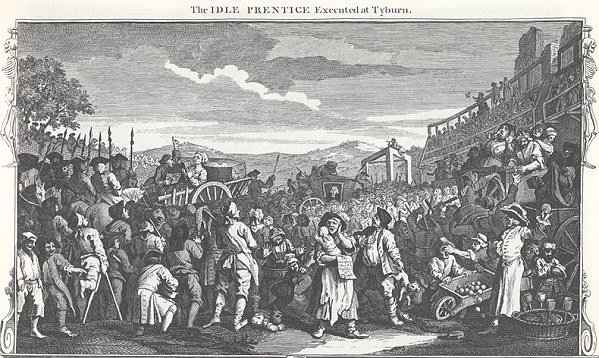Special Days Every Month
Celebrate and learn about special days
every day of the year!
|
Last Public Execution
26 May 1868 |
|
Who was the last person to be hanged in public in Britain? The last person publicly hanged in Britain was Michael Barret, for his participation in the deadly explosion set off outside Clerkenwell Prison in London in December 1867. The Clerkenwell bombing was the most serious terrorist action by Irish Republicans in Britain in the 19th century. Why were public hangings stopped? Public execution was stopped in 1868 as too many people saw it as inhumane and it no longer acted as a deterrent to other criminals. Entertainment Huge crowds would gather for a public hanging.The condemned person was insulted and pelted with rotten fruit by the crowds gathered.
The Three Legged Mare At Tyburn (and later Newgate) there was a large set of gallows known as the ‘Three-Legged Mare’ on which many criminals could be hanged at the same time. The gallows consisted of a wooden triangle standing on three wooden pillars.
Tyburn was the principal location in London for public executions by hanging. It was at the junction between two Roman roads, (now Oxford Street and Edgware Road, near where the Marble Arch now stands). In 1783 the gallows at Tyburn were moved to just outside of Newgate prison. The last executions by hanging in the United Kingdom Capital punishment in the United Kingdom was abolished in the twentieth century. The last executions by hanging took place in 1964, prior to capital punishment being abolished for murder (in 1969 in Great Britain and in 1973 in Northern Ireland). The death penalty remained on the statute book for certain other offences until 1998., but not applied,
|
See Teaching Resources for today’s date
Back to Facts of the Day Calendar
Jan | Feb | Mar | Apr | May | Jun | Jul | Aug | Sept | Oct | Nov | Dec
 © Copyright – please read © Copyright – please read All the materials on these pages are free for homework and classroom use only. You may not redistribute, sell or place the content of this page on any other website or blog without written permission from the . projectbritain.com | primaryhomeworkhelp.co.uk |
© Copyright 2013
is the creator of the Woodlands Resources section of the Woodlands Junior website.
The two websites projectbritain.com and primaryhomeworkhelp.co.uk
are the new homes for the Woodlands Resources.
left Woodlands in 2003 to work in Kent schools as an ICT Consulatant.
She now teaches computers at The Granville School and St. John’s Primary School in Sevenoaks Kent.
Woodlands Junior Homework Help new website
born on this day what happened on this day famous birthdays interesting facts did you know Interesting Calendar Facts.

 The Capital Punishment Amendment Act of 1868 meant that public executions were to be ended.
The Capital Punishment Amendment Act of 1868 meant that public executions were to be ended. 





